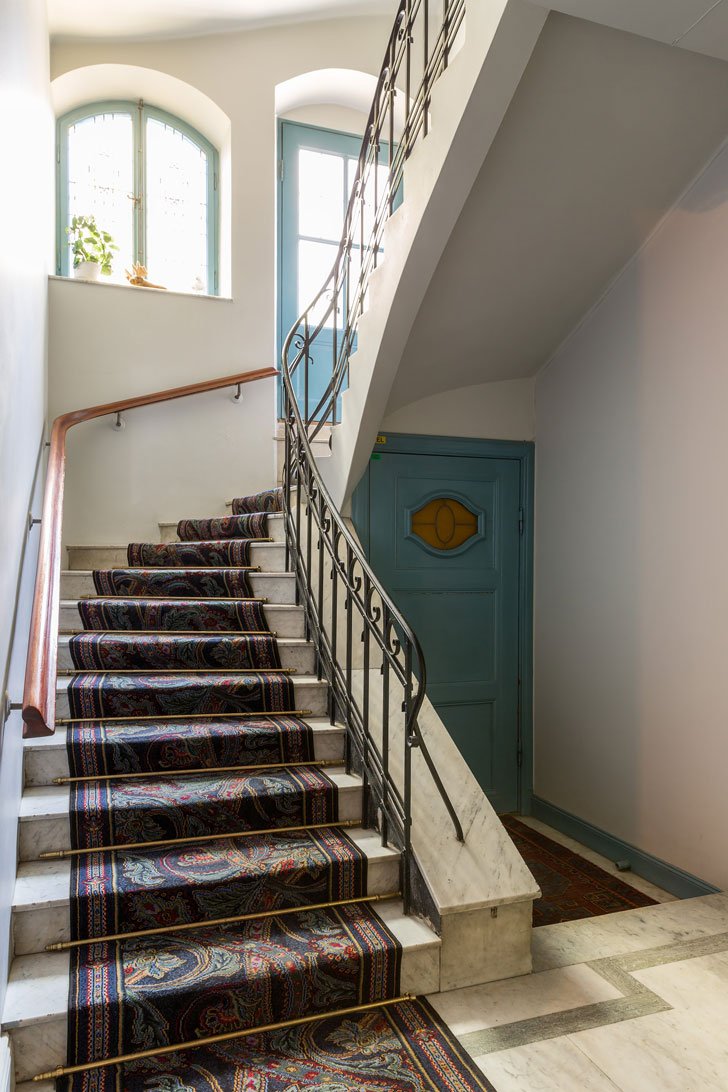#4800. Classic staircase with turquoise accents: harmony of tradition and color in a historic interior

This elegant interior space of a historic house demonstrates a successful balance between classical architectural elements and subtle color accents. The staircase with marble steps serves as the central element of the composition, accentuated by an exquisite carpet runner with an Oriental pattern that adds warmth and visual richness to the space.
Particular attention is drawn to the wrought iron stair railing with flowing lines and artistic curls characteristic of classical style. The metal carpet rods are not only functional but also serve as a decorative element, emphasizing the horizontal lines of the staircase.
The color palette of the interior is built on the contrast of neutral white walls and turquoise-blue accents appearing in window and door frames. This color scheme creates a fresh, airy atmosphere while preserving the historical character of the space. The door with an interesting yellow decorative element adds individuality to the interior.
The arched window with a turquoise frame allows natural light to enter, emphasizing the height of the ceilings and creating a sense of spaciousness. A small plant on the windowsill adds a living element to the composition. The marble floor in the entrance hall with a geometric pattern completes the cohesive image of this elegant interior design, demonstrating attention to details and materials.
When designing your own home, you can take note of several techniques from this interior: using a contrasting carpet runner on the staircase to create a visual accent, applying colored window and door frames as a way to introduce color without overwhelming the space, and combining classical architectural elements with delicate modern touches to create a harmonious, timeless look.